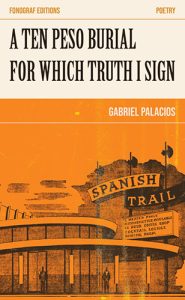Brick – Summer 2011
Issue 87
Summer 2011
Biannual
Robyn Campbell
Brick is one of those journals that makes you feel a little inadequate, but in a good way. You realize, after reading, the vast amount of interesting and impressive writers who have somehow stayed hidden from you. It’s not only a matter of discovering new, contemporary voices you hadn’t yet had the pleasure of hearing (though that’s certainly part of it), but one of being exposed to established authors as well, those who have been around for years and—apparently—already have a good deal of clout to their names (even though you have no idea who they are). This latest issue of the Canadian-born magazine does a wonderful job of making you want to learn more about these men and women, to run to the library and check out every one of their books.
Brick is one of those journals that makes you feel a little inadequate, but in a good way. You realize, after reading, the vast amount of interesting and impressive writers who have somehow stayed hidden from you. It’s not only a matter of discovering new, contemporary voices you hadn’t yet had the pleasure of hearing (though that’s certainly part of it), but one of being exposed to established authors as well, those who have been around for years and—apparently—already have a good deal of clout to their names (even though you have no idea who they are). This latest issue of the Canadian-born magazine does a wonderful job of making you want to learn more about these men and women, to run to the library and check out every one of their books.
Take for example two Polish poets, Aleksander Wat and Zbigniew Herbert, discussed in Alissa Valles’s “A Wound Like a Mouth.” Despite their being a generation apart and coming from different religious, political, and social backgrounds, Valles points out that “one of the main sources of metaphysical reflection for both poets was pain.” The real, bodily stuff, not just the abstract idea of it. They both “sought to de-allegorize pain, to talk pain back to the wound, to make the wound talk.” Following Valles’ essay is an excerpt from Wat’s “Diary Without Vowels,” translated by Valles herself, and Herbert’s “Animula.”
Also included are lengthy interviews with James Salter, Joseph Brodsky, Edmund de Waal (perhaps equally well-known for his ceramics and his memoir “The Hare with Amber Eyes”), and Ken Babstock, making it clear that Brick is a journal for those who love writing, and love reading about writing, and reading about writers, and reading about reading. I found Ken Babstock’s interview, led by Karen Solie, to be the most intriguing. Not only does Babstock have that sort of eloquent self-deprecating voice I find so charming, but Solie asks wonderful, conversational questions. Where some interview(er)s can fall short, simply checking off a pre-written list, Solie hits the mark and gets involved in an actual emotional and philosophical discussion. I found myself mentally nodding along to most of what Babstock had to say about the writing process, about his (or humankind’s) own embraceable inadequacies:
. . . the notion of just rolling your eyeballs back and looking inward and seeing the emotion plastered there in boldface, and then writing a representation of that emotion is, I think, completely false. We don’t know ourselves. Any thinking, contemplating, meditating—whatever you want to call it, the work that comes prior to the poem—is about trying to circumvent our own delusions, or at least allowing them into play.
The journal is not strictly made of behind-the-scenes works. Several pieces of fiction and poetry are also included, most notably “Newts” by Czeslaw Milosz, “Heat the Woods” by Annie Russell, and “The Saying,” an incredible poem by Sharon Olds that fits in well with the journal’s overall ardor for words, their weight and power. With the push of an old boyfriend’s simple “you like it?” the narrator was taken “into a more real world, where a noun / was an organ low in the belly—as if there was / Respiratory and Circulatory / and Vocabulary.” And that seems to be the lesson contained within Brick, if literary magazines can be said to contain lessons: words are important, as important as the people who write them and use them. Anyone who feels a similar type of devotion would be enthralled by this latest issue.
[www.brickmag.com]




